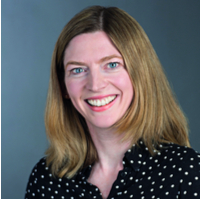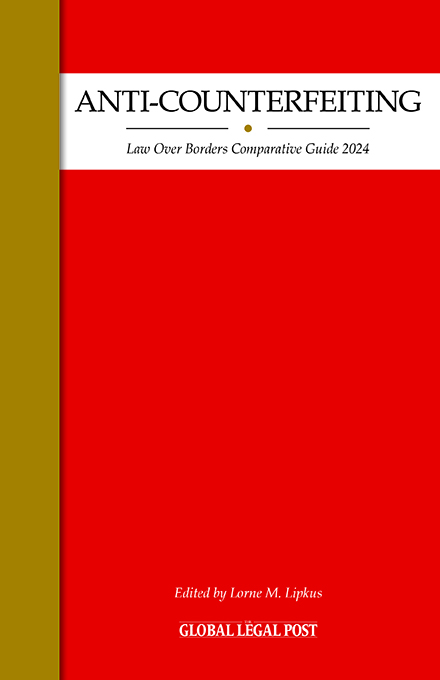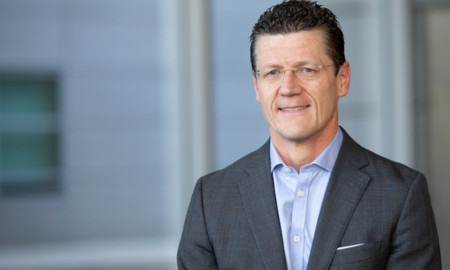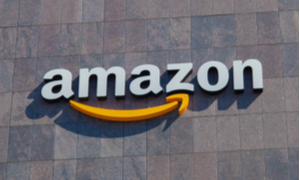Sign up for our free daily newsletter
YOUR PRIVACY - PLEASE READ CAREFULLY DATA PROTECTION STATEMENT
Below we explain how we will communicate with you. We set out how we use your data in our Privacy Policy.
Global City Media, and its associated brands will use the lawful basis of legitimate interests to use
the
contact details you have supplied to contact you regarding our publications, events, training,
reader
research, and other relevant information. We will always give you the option to opt out of our
marketing.
By clicking submit, you confirm that you understand and accept the Terms & Conditions and Privacy Policy
“Against a backdrop of disruptive change across societies and economies around the world, the involvement of serious and organised crime networks in IP crime has been the significant constant. As they have adapted, we must ensure our ability to disrupt this threat keeps pace,” said Eve Alexander, head of intelligence analysis at the UK’s Intellectual Property Office (IPO).
Alexander was speaking to GLP ahead of its Anti-Counterfeiting World Law Summit on 18 October in London, where she will be discussing trends in trading counterfeit goods.
Unsurprisingly, the biggest change she has seen is in the online landscape. There are some similarities between then and now in the tried and tested sale of physical goods, she pointed out. However, the acceleration of social media engagement and the proliferation of smartphone use has had an enormous impact on the marketing and the supply of counterfeits, both at the wholesale level and at the consumer end point.
The IPO has just commissioned the OECD to update the trade in counterfeit goods estimates to give a more up-to-date figure and it is expected early next year, Alexander noted, with the number predicted to be “substantially higher” than those from 2019 and 2016. The IPO is also working to develop a methodology to assess the impact of IP crime.
Driving factors
Discussing what has driven these changes, Alexander explained that, as recognised by the National Crime Agency in its 2023 threat assessment, there has been a growth in the resilience and adaptability of serious organised crime (SOC) groups, which are often at the heart of international counterfeiting networks.
That resilience and adaptability has really developed over the last five years, she said, partly because of online access and new technology. She couldn’t say that the Covid-19 pandemic directly made their job of tackling IP infringement harder, but “we can say that the increased amount of time people were spending online, the blossoming of those social media platforms and all age groups getting involved created new markets for people selling online”.
She said the more resilient SOC groups become, the more creative enforcement agencies need to be, adding that bad actors had been adapting to the online world anyway but that lockdowns accelerated it.
Alexander is well versed in tackling criminal activity; before she moved to the IPO two years ago, she spent 18 years working at the Avon and Somerset Constabulary in intelligence.
Her biggest eye opener when she moved over from policing was the realisation that counterfeiting “is driven by serious organised crime, it’s driven by international criminality and involves huge amounts of money, and other illegal activities go along beside it most notably money laundering, fraud and exploitation”.
She continued: “As soon as you acknowledge that this is not about products, it’s about money, it’s about power, it’s about influence, like any other SOC group activity, you can see of course they are going to be resilient, of course they are going to adapt, whatever the situation.”
The IPO intelligence and law enforcement team is very much intelligence-led and harm focused, she noted. They are directing efforts towards disrupting the international serious and organised crime networks that drive IP crime and infringement. This affects UK business, consumers and so ultimately the UK economy at large. “When criminals abuse IP, they are abusing our economy,” said Alexander.
AI
Physical and online counterfeiting and infringement are two different worlds, but, she said, they are seeing “more cross over”.
The metaverse also presents challenges, including “people selling branded digital items that were not from the brand”.
AI has now usurped the metaverse not least in terms of newspaper headlines generated, she pointed out. “It’s not just how we in the enforcement space can use AI and how brands use AI to identify counterfeit products that are being sold, but also how criminal actors use AI to target businesses and individuals.
“So we have this brave new world evolving at great pace and a real need to prepare for how we within law enforcement can mitigate the emerging threats to IP within that new landscape,” she said.
As we are learning about AI “the infringers and criminals are learning as well. So there is this constant need to be ahead of the game and identify what’s next on the horizon”.
Demographics
The IPO produced a report on social media influencers and counterfeit goods in March 2022, which threw up a number of interesting findings. Alexander noted that it went through a long process of understanding the role of those social media influencers, and where they have most influence. And, as part of that, the process was to understand who is more likely to buy these items and why.
As the office went through the research, it found that younger age groups were more likely to rationalise the purchasing of counterfeit goods.
Alexander explained that there was an element of “risk blindness” with younger groups, who were more likely to believe this wasn’t damaging to jobs or businesses. “There’s no risk to consumer health, it’s not going to harm me. And that risk appetite was also much higher in the younger cohorts,” she said.
She added that this can lead to a disparity in awareness of potential consumer harms, using the example of buying counterfeit hair straighteners. “These are known to create a significant fire risk,” she said. “An older consumer is much more likely to be aware of this type of risk, which will influence their decision to not buy such products.”
The World Intellectual Property Organisation (WIPO) has done a recent study across 50 countries that also showed understanding and awareness of IP was lower in younger age groups. And as a result of that, WIPO is looking to pull together a youth action plan to try and address that awareness gap.
Because, ultimately, as Alexander noted: “If you’re younger, you want that item, you want that luxury brand. Or want to look as though you've got the luxury brand and have the kudos that comes with that.”
She stressed the importance of partnerships and collaboration. “Our approach is very much centred on delivering a central coordination role, for enforcement agencies, brand owners and representatives. We all need to work together to protect IP rights and the economy, and prevent consumer harm. The IP Crime Group consists of 80 members working collaboratively, to our individual strengths, to achieve this.
“Changing public opinion is difficult, but if we can show people the harm being done to things that they care about and can relate to, we will be in a stronger position to change behaviours and keep ahead of the threat.
“Our partnerships with law enforcement runs in parallel to our campaigning activity. Together, they form a pincer movement that tackles supply and helps dampen demand. As part of this approach, we need to take specific action to educate the public and help build awareness,” she said.
On whether intermediaries are doing enough to tackle counterfeiting, Alexander said that no matter what platforms do, there will always be ways around it.
They are seeing thousands of adverts all the time, she said, and some of them “drop in and out just for a couple of hours. ‘Last minute opportunity,’ ‘Great sale’… so it’s actually, very difficult for any platform to definitely remove everything, it is going to be a whack-a-mole scenario.”
But that is why they are engaging with platforms, she added, “because we can see the power that they’ve got, we can see that they can help in this space”.
Social media
Turning specifically to social media platforms such as Instagram, Alexander explained that sometimes it is not about the item itself, but the bad actor attempting to get people to sell the item for them.
This is obviously a concern, because economic pressures are pushing some people to take risks they wouldn’t otherwise take. “So that’s something that we are monitoring at the moment, we're not seeing huge volumes, but it is something that's developing in the background,” she said.
Recent seizures at UK borders have seen authorities find counterfeit football kits bearing the name of a club’s latest star player, just a few days after the player was signed for that club. “The international SOC groups often have access to readily replaceable cheap labour sources, and the means to produce, transport and sell products cheaply through extended networks here in the UK,” she pointed out.
With the counterfeiting activity comes abuse – of the people who work for them in the source country and here in the UK. “We are seeing modern slavery elements here in the UK when it comes to relabelling and transportation and sales,” she added.
A lot of consumers do not realise or perhaps don’t recognise that when rationalising whether to buy something, she said.
“Counterfeit items are heavily linked to the abuse of people and the abuse of the economy, we need to get that message out.”
We need to effectively dismantle organised crime groups, and reduce demand for the items that they are providing. If we don’t, this abuse is going to continue and that is something the IPO along with its partners, including brand owners, continues to work on, she said.
She concluded: “Our ambition is to change public attitudes and ultimately increase respect for IP rights. Respect flows from understanding. With our partners, such as the IP Crime Group, we need to work towards a long-term goal of making counterfeiting and IP crime socially unacceptable to all.”
Email your news and story ideas to: [email protected]








.jpg)
%20counterfeit.jpg)

